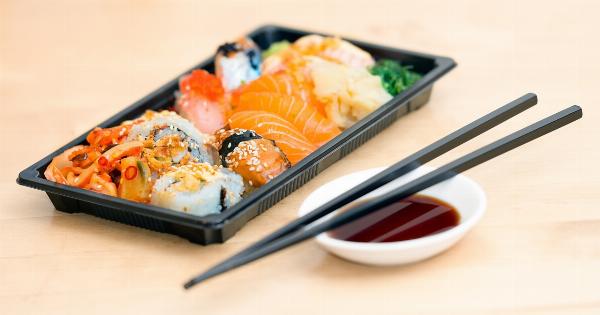Seafood is an excellent source of low-fat and high-quality protein, vitamins, and minerals that offer various health benefits. However, not all types of seafood are safe and healthy for consumption.
Some have higher levels of mercury and pollutants, while others are prone to bacterial infections. It is crucial to know which seafood to avoid to prevent health risks and ensure safe and sustainable seafood consumption.
Avoid These Seafood for Their High Mercury Levels
Mercury is a naturally occurring element that can accumulate in marine life, and excessive consumption of seafood with high mercury levels can lead to mercury poisoning, which can cause serious health problems.
The following are seafood with high mercury levels:.
Shark
Shark is one of the top predators in the ocean’s food chain, and it accumulates high levels of mercury in its flesh.
The United States Food and Drug Administration (FDA) advises pregnant women, nursing mothers, and young children to avoid shark consumption entirely.
Swordfish
Like shark, swordfish is a large predator with high levels of mercury. The FDA recommends limiting swordfish intake to one serving per month for adults and excluding it entirely from the diet of children and pregnant and nursing women.
King Mackerel
King mackerel, a popular sport fish in the Gulf of Mexico, is notorious for its high mercury levels. The FDA advises limiting king mackerel intake to one serving per month or avoiding it entirely for pregnant and nursing women and young children.
Tuna
Tuna is one of the most popular seafood globally, but some species have high mercury levels. The larger the tuna, the higher the mercury levels.
The FDA recommends limiting albacore tuna consumption to six ounces per week for adults and excluding it entirely from the diet of pregnant and nursing women and young children.
Tilefish
Tilefish is a deep-sea fish with high mercury levels that can cause significant health risks.
The FDA advises against consuming tilefish entirely for pregnant and nursing women and young children and limiting it to one serving per month for other adults.
Avoid These Seafood for Their High Pollutant Levels
Some seafood can be high in environmental pollutants, such as polychlorinated biphenyls (PCBs), dioxins, and other chemicals. These pollutants can harm the nervous and immune systems, increase cancer risks, and affect fetal brain development.
The following seafood may contain high levels of environmental pollutants:.
Cod
Cod is often exposed to pollutants in the ocean, and some cod populations have higher levels of PCBs and dioxins. The FDA recommends limiting consumption of cod to two servings per week.
Halibut
Like cod, halibut is a bottom-dwelling fish that accumulates toxins from sediment on the ocean floor. The FDA recommends limiting halibut consumption to two servings per month.
Lobster
Lobster is a highly prized seafood, but it may contain high levels of environmental pollutants.
The FDA suggests limiting lobster consumption to two servings per week for adults and excluding it entirely from the diet of pregnant and nursing women and young children.
Crab
Some crabs, especially those caught in polluted waters, may contain high levels of toxins. The FDA recommends limiting crab consumption to one to two servings per week.
Avoid These Seafood for Their Risk of Bacterial Infections
Seafood can also harbor bacteria, viruses, and parasites that can cause foodborne illnesses. These illnesses can cause diarrhea, nausea, vomiting, fever, and abdominal cramps. The following seafood may have a higher risk of bacterial infections:.
Oysters
Oysters can contain norovirus, Vibrio bacteria, and other pathogens that can cause food poisoning. The FDA recommends cooking oysters thoroughly, especially for people with weakened immune systems.
Raw Shellfish
Raw shellfish, such as clams, mussels, and scallops, can carry Vibrio bacteria and other infectious agents that can cause serious illnesses.
The FDA suggests avoiding raw or partially cooked shellfish, particularly for individuals with weakened immune systems.
Sushi
Sushi is a popular Japanese cuisine that often includes raw fish, and it can be contaminated with various pathogens, including parasites that can cause foodborne illnesses.
Proper handling and preparation of sushi are crucial to minimize the risk of infection.
Surimi
Surimi, a processed seafood product made from various fish species, can carry Listeria, a bacterium that can cause severe infections, particularly in pregnant women, young children, and older adults.
The FDA advises cooking surimi products thoroughly before consumption.
Conclusion
While seafood offers many health benefits, it is crucial to know which types to avoid due to high mercury or pollutant levels, or the risk of bacterial infections.
Pregnant women, nursing mothers, and young children should take extra caution when consuming seafood and avoid types that pose significant health risks. By making informed choices about the seafood we eat, we can reap the best health benefits while reducing the risks of possible health effects.






























